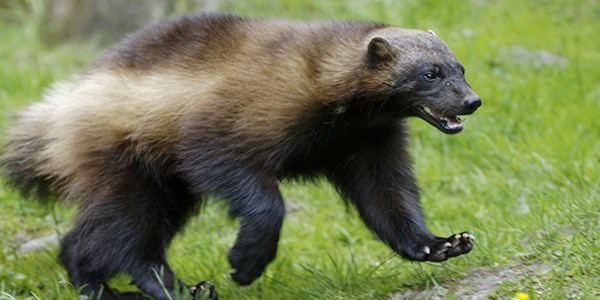Last updated: December 29, 2021
Article
Wolverines

Photo: National Wildlife Federation
Wolverines are the largest member of the weasel family, but could easily be confused with small bears with bushy tails. If you’ve never seen one, you’re not alone. There are only an estimated 300 remaining in the continental U.S., living primarily in the higher elevations of the Rocky Mountain states.
Wolverines (Gulo gulo) are not specifically mentioned in the journals of the Corps, but it’s very likely the members of the Corps encountered the powerful mammal several times. They just weren’t sure what to call it.
In mid-June 1805, when returning from his exploration of the Great Falls of the Missouri River, Meriwether Lewis wrote, “…my direction led me directly to an anamal that I at first supposed was a wolf. But on nearer approach or about sixty paces distant I discovered that it was not. Its colour was a brownish yellow; it was standing near it's burrow, and when I approached it thus nearly, it c[r]ouched itself down like a cat looking immediately at me as if it designed to spring on me. I took aim at it and fired. It instantly disappeared in its burrow. I loaded my gun and examined the place, which was dusty, and saw the track from which I am still further convinced that it was of the tiger kind. Whether I struck it or not I could not determine, but I am almost confident that I did.”
In his next paragraph Lewis referred to it as a "tyger cat." Lewis probably spotted another wolverine a few months later in mid-August 1805, in the vicinity of Lemhi Pass.
Wolverines has weigh up to 45 pounds, and are frequently up to 45 inches in length, including their thick tail. Even though they have limited eyesight, their keen senses of smell and hearing allow them to find almost any type of sick or decaying prey.
Alt Text: A large wolverine is running. It has a head similar to a small bear and has long fur, that is primarily black, but there are also varying shades of brown, and a stripe of cream-white on its side. Long claws can be seen on several of its feet.
